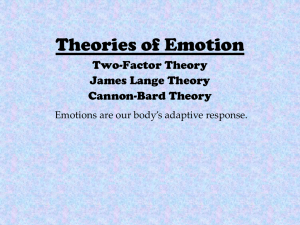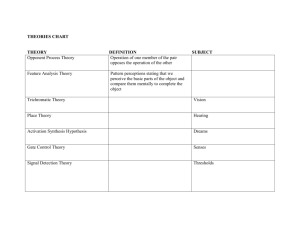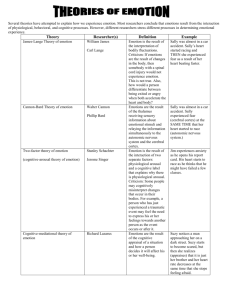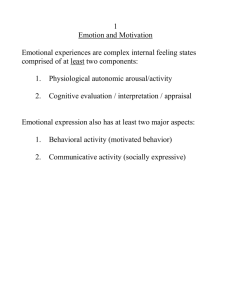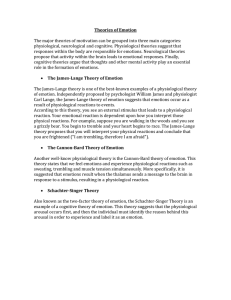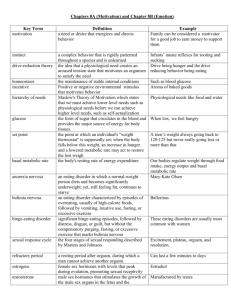Psychology Emotion Theories
advertisement
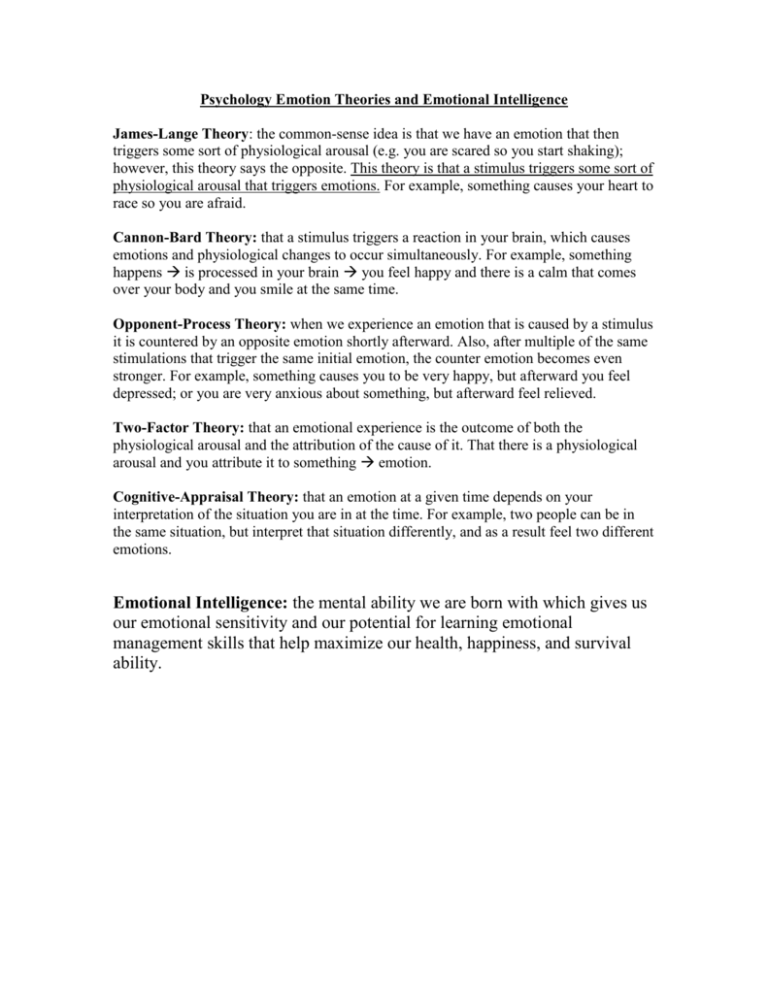
Psychology Emotion Theories and Emotional Intelligence James-Lange Theory: the common-sense idea is that we have an emotion that then triggers some sort of physiological arousal (e.g. you are scared so you start shaking); however, this theory says the opposite. This theory is that a stimulus triggers some sort of physiological arousal that triggers emotions. For example, something causes your heart to race so you are afraid. Cannon-Bard Theory: that a stimulus triggers a reaction in your brain, which causes emotions and physiological changes to occur simultaneously. For example, something happens is processed in your brain you feel happy and there is a calm that comes over your body and you smile at the same time. Opponent-Process Theory: when we experience an emotion that is caused by a stimulus it is countered by an opposite emotion shortly afterward. Also, after multiple of the same stimulations that trigger the same initial emotion, the counter emotion becomes even stronger. For example, something causes you to be very happy, but afterward you feel depressed; or you are very anxious about something, but afterward feel relieved. Two-Factor Theory: that an emotional experience is the outcome of both the physiological arousal and the attribution of the cause of it. That there is a physiological arousal and you attribute it to something emotion. Cognitive-Appraisal Theory: that an emotion at a given time depends on your interpretation of the situation you are in at the time. For example, two people can be in the same situation, but interpret that situation differently, and as a result feel two different emotions. Emotional Intelligence: the mental ability we are born with which gives us our emotional sensitivity and our potential for learning emotional management skills that help maximize our health, happiness, and survival ability.
